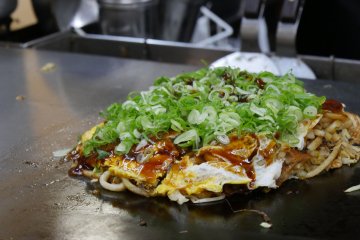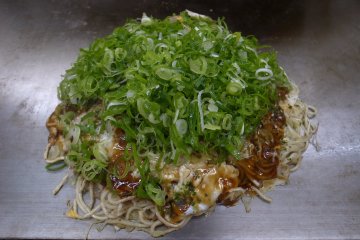Overview
Even without its incredible sightseeing opportunities, Hiroshima would still be worth visiting just for its magical oysters and hearty style of okonomiyaki pancake. These foods alone do a great job of representing the prefecture around the nation but Hiroshima also surprises with some rather unique variations of the classical winter hotpot dish. Here is a look at just some of the local foods of Hiroshima.
Kaki no dotenabe
A kind of oyster hotpot, kaki no dotenabe sees the inside of a pot is coated with miso paste. Unique to Hiroshima, the miso is then mixed into the broth to taste. Filled with oysters, tofu, and vegetable, this incredibly heartwarming dish with its earthy umami flavouring is now found all over the country.

Oysters
Joy simply does not do justice in describing the pleasure of eating Hiroshima's oysters. Accounting for the bulk of the nation's supply, kaki, as they are called in Japanese, are pearls of oceanic paradise and if you head down to Hiroshima Oyster Road, you will find scores of stores offering matches made in heaven.

Okonomiyaki
Hiroshima okonomiyaki is the beast version of the usual okonomiyaki. The people of Hiroshima are rightfully proud of it as it helped fuel the city after its atomic tragedy. Layered instead of mixed, it includes plenty of cabbage, bean sprouts and pork as well fried noodle and egg, all doused with a liberal dose of Worcestershire-style sauce and mayonnaise.

Bishu nabe
Hiroshima takes its famous sake brewery tradition to another level with its unique hotpot dish, bishu nabe. Made without any extra water, this sturdy dish is simmered using only sake rice alcohol along with the natural juices found in its vegetable ingredients. Chicken or pork, along with some salt and pepper, help seal the flavour deal.












